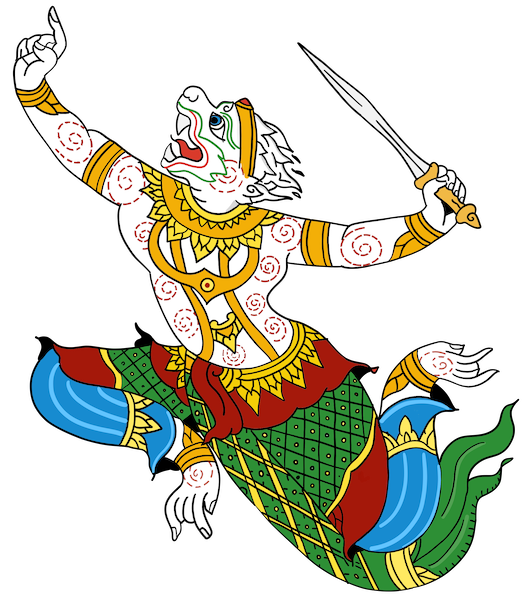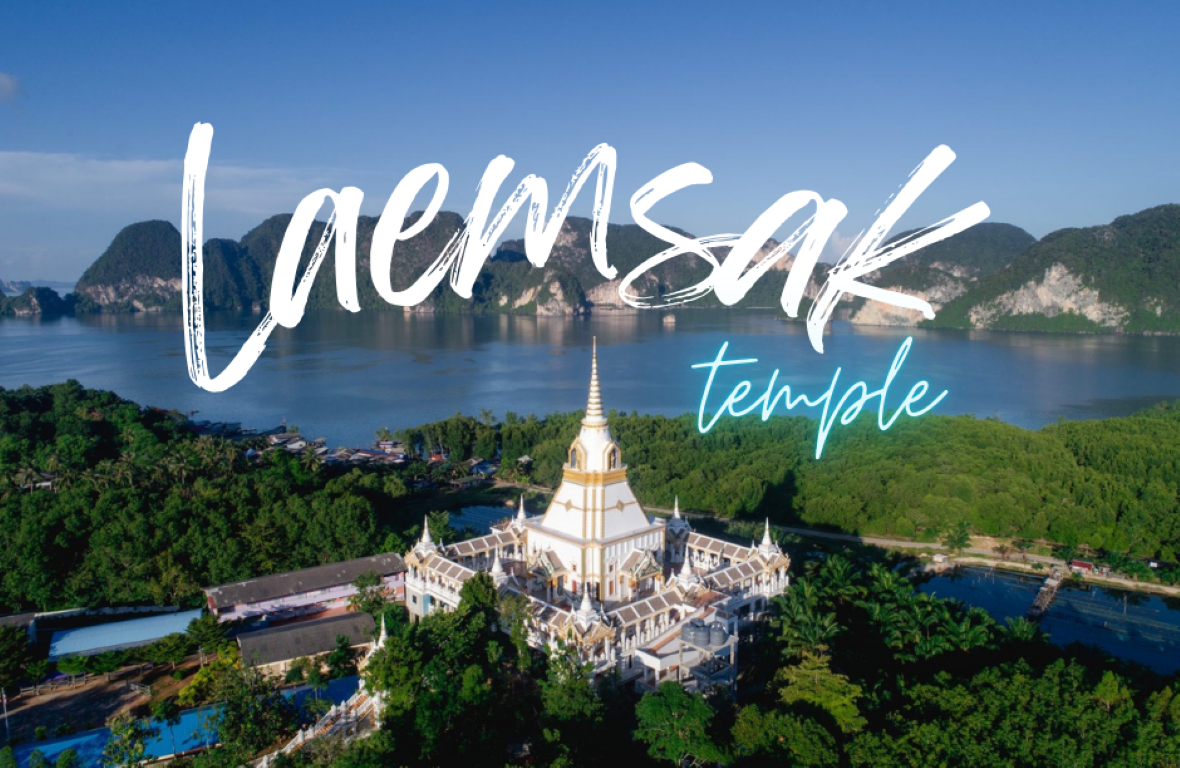Krabi, a province in southern Thailand known for its stunning beaches and limestone cliffs, is rich in both natural beauty and wildlife. One of the fascinating aspects of this region is its population of monkeys. In Thailand, the word “Krabi” holds dual meanings—sword and monkey—the latter being a symbolic reflection of the significant presence of monkeys throughout the province. These intelligent and curious creatures are found in various parts of Krabi, from bustling tourist spots to quiet forests, offering a unique experience for visitors.
In this article, we will delve into the history of monkeys in Krabi, explore all the species that inhabit the region, and highlight the best places where tourists can visit to observe these animals in their natural habitat.
The History of Monkeys in Krabi
Monkeys have been part of the cultural and ecological landscape of Krabi for centuries. Local folklore and stories passed down through generations often depict monkeys as both revered and mischievous creatures. Krabi’s history with monkeys likely stems from its dense forests, which provided an ideal habitat for various species of primates long before the area became a popular tourist destination.
Many locals believed that monkeys held spiritual significance, often associating them with specific natural elements like forests and mountains. Monkeys can be seen as guardians of the forest, protecting both the natural world and the spiritual realm.
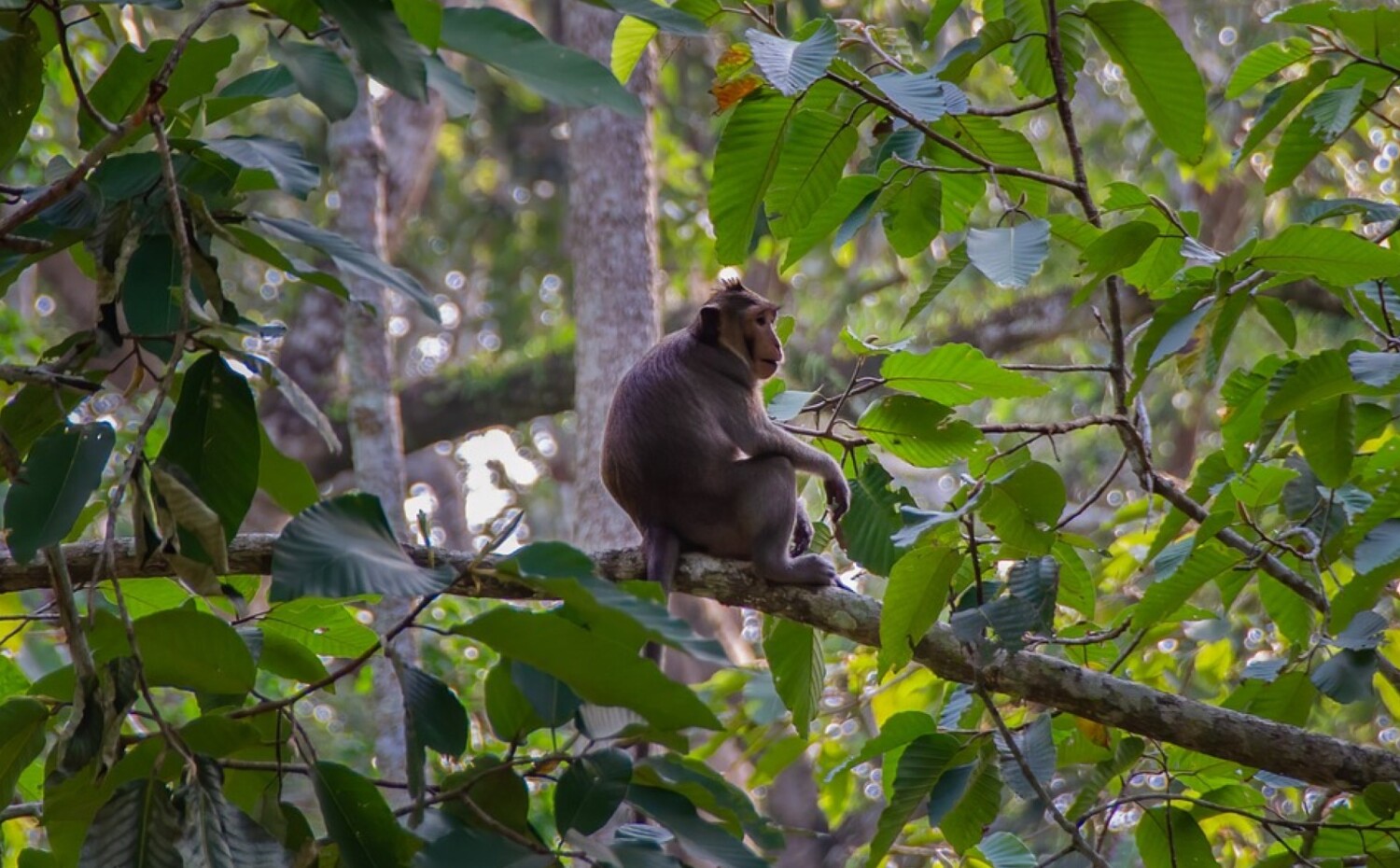
Macaques (Long-tailed Macaque)
The most commonly seen species of monkey in Krabi is the Long-tailed Macaque (Macaca fascicularis). These monkeys are highly adaptable and thrive in a range of environments, from dense mangroves and forests to urban areas. Macaques are known for their playful nature and are often seen in large social groups. They have long tails, expressive faces, and love to interact with tourists, especially if food is involved. Macaques are commonly found in tourist hotspots such as Railay Beach, Ao Nang, and Krabi Town, as well as in Ao Luek.
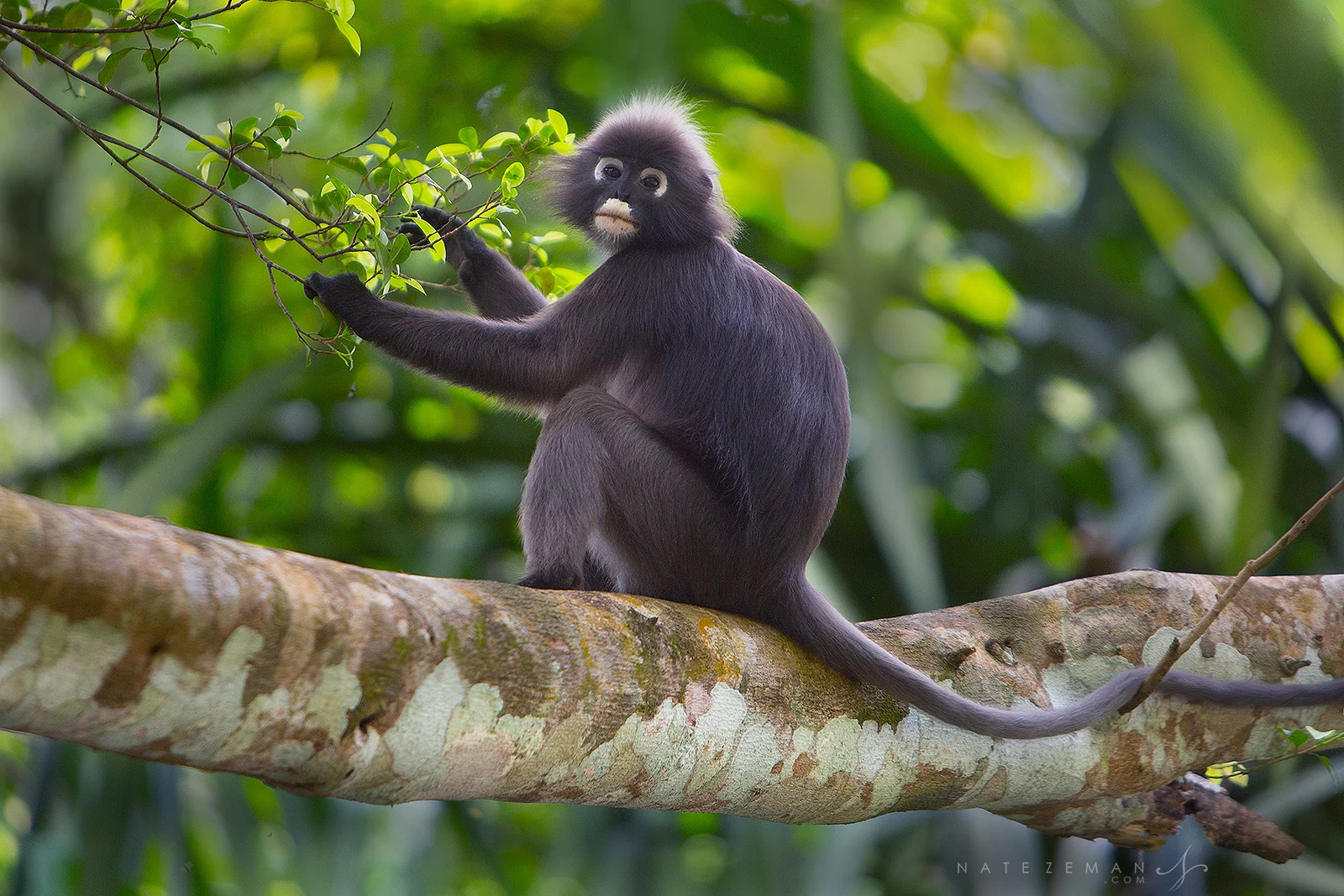
Dusky Langur (Spectacled Leaf Monkey)
The Dusky Langur (Trachypithecus obscurus), also known as the Spectacled Leaf Monkey, is one of the more elusive and less aggressive monkey species in Krabi. It gets its nickname from the white rings around its eyes, giving it a “spectacled” appearance. These langurs are primarily leaf-eaters and prefer staying in the trees, making them harder to spot than macaques. However, they can be found in the forests of Khao Phanom Bencha National Park and Than Bok Khorani National Park, which is near Ao Luek.
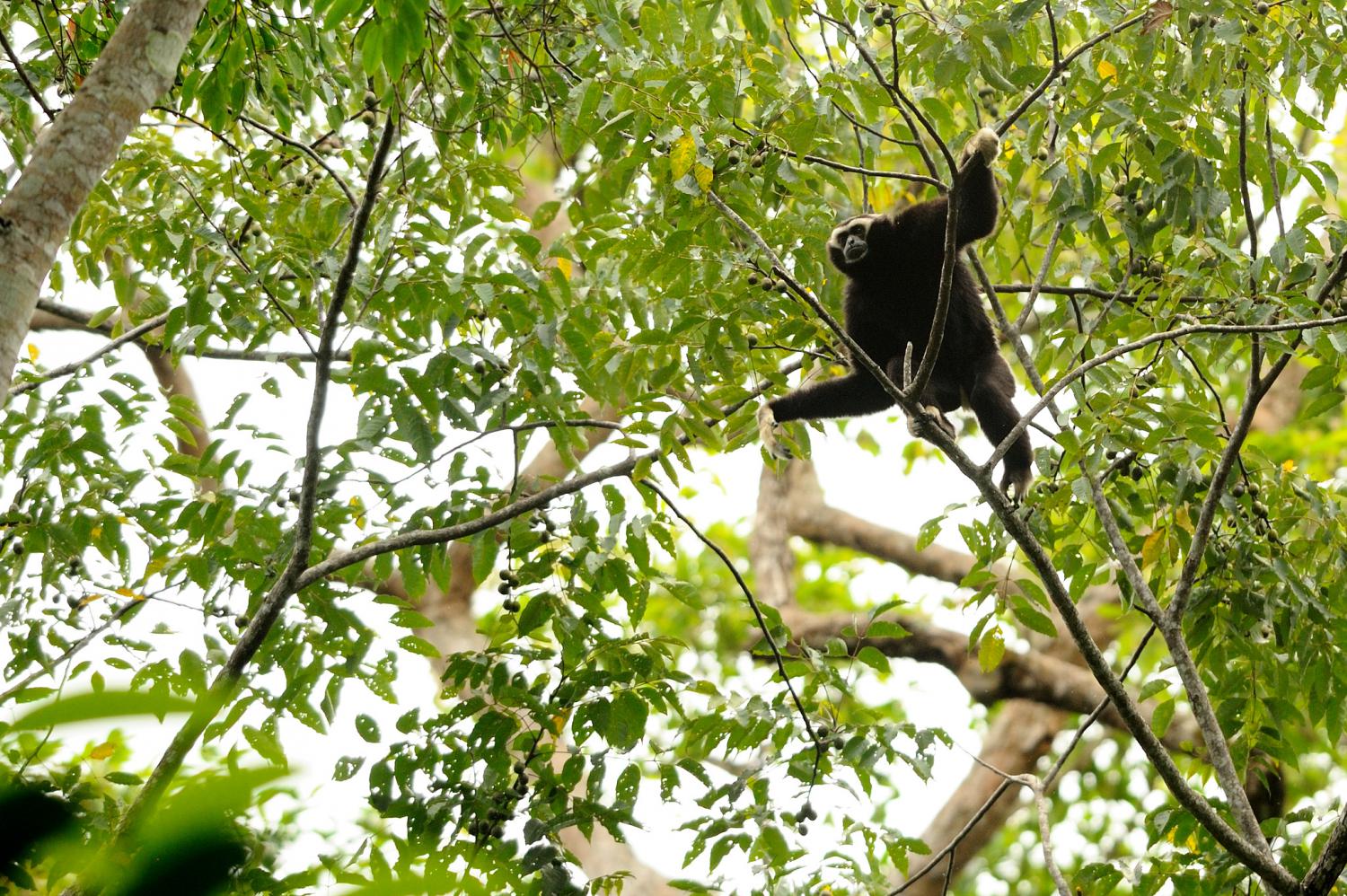
Pileated Gibbon
Another primate species found in Krabi’s forests is the Pileated Gibbon (Hylobates pileatus), known for its distinct calls that echo through the trees in the early morning. Gibbons are tree-dwelling monkeys that move gracefully through the forest canopy using their long arms. Unlike macaques, they are not often seen on the ground, so catching a glimpse of them requires venturing into deeper forested areas like Khao Phanom Bencha National Park and Ao Luek’s forest reserves.

Pig-tailed Macaque
Less common but still present in Krabi is the Southern Pig-tailed Macaque (Macaca nemestrina). These monkeys are larger and have shorter tails compared to the Long-tailed Macaque. They are often found in more remote forested areas and sometimes seen working alongside humans in coconut plantations, where they are trained to harvest coconuts. Pig-tailed macaques can be found in the deeper regions of Ao Luek, particularly around caves and forested trails.
Best Places to Visit and See Monkeys in Krabi
Ao Luek Forest Reserves
Ao Luek, located northeast of Krabi Town, offers an off-the-beaten-path opportunity for tourists to encounter wild monkeys, especially Long-tailed Macaques. The region’s dense mangroves and limestone caves provide the perfect habitat for these primates. Tourists visiting Than Bok Khorani National Park in Ao Luek can often see monkeys along forest trails or around mangrove areas, where the curious macaques may approach visitors.Railay Beach
One of Krabi’s most famous beach destinations, Railay Beach, is not just known for its stunning cliffs and turquoise waters but also for its large population of Long-tailed Macaques. These monkeys can often be seen climbing the cliffs or lounging on the beach, particularly at Phra Nang Cave. Tourists visiting this area should be cautious as these monkeys are very familiar with humans and are often quite bold in their search for food.Khao Phanom Bencha National Park
For those looking to see less common monkeys like the Dusky Langur and Pileated Gibbon, Khao Phanom Bencha National Park is a must-visit. This dense forested park, home to Krabi’s highest peak, offers pristine jungle trails where monkeys can be spotted foraging in the treetops. The park’s rich biodiversity makes it an ideal place to explore both wildlife and stunning waterfalls.Than Bok Khorani National Park
Known for its natural pools, caves, and lush forests, Than Bok Khorani National Park in Ao Luek is another excellent destination to see monkeys in the wild. The Long-tailed Macaques are often seen near the park’s entrance, while more elusive species like the Dusky Langur can be spotted deeper in the park. Tourists visiting the caves in Ao Luek, such as Tham Pee Hua To cave, might also encounter monkeys on the way.Monkey Trail at Ao Nang
At the southern end of Ao Nang Beach, the Monkey Trail offers a short but rewarding trek through the forest. This trail, named after the macaques that inhabit the area, leads from Ao Nang to Pai Plong Beach. The Long-tailed Macaques are often seen in the trees along the path, observing the tourists making their way through their forest home.
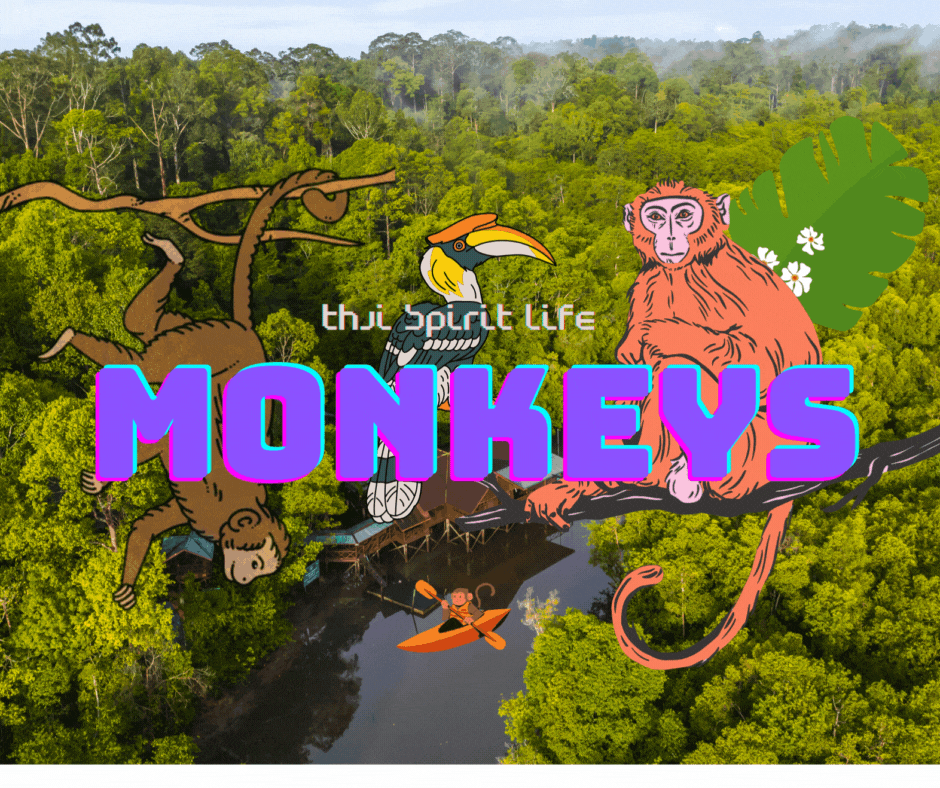
What Tourists Should Know and Prepare
Respect Wildlife
While it may be tempting to feed or approach the monkeys, it’s essential to remember that they are wild animals. Feeding them can disrupt their natural diet and make them more aggressive towards humans. Always observe from a distance.Bring Binoculars
For species like the Pileated Gibbon and Dusky Langur, binoculars are useful for spotting them in the treetops, as they tend to avoid ground-level encounters.Stay Alert
Monkeys, especially macaques, are known to be opportunistic and will grab bags, food, or cameras if left unattended. Keep your belongings secure, especially in areas where monkeys are common.Wear Comfortable Shoes
Many monkey hotspots in Krabi, such as Than Bok Khorani National Park and Ao Luek, require walking or trekking through forested areas. Wear sturdy, comfortable shoes for the best experience.Bring Water and Snacks (For Yourself)
It’s essential to stay hydrated, especially when hiking to see monkeys in forested areas. However, avoid carrying visible snacks, as the macaques can quickly become interested in your food.
Krabi’s rich natural environment provides an excellent opportunity for tourists to explore not only the region’s stunning landscapes but also its vibrant wildlife, particularly monkeys. Whether you’re spotting Long-tailed Macaques on Railay Beach, listening to the calls of Pileated Gibbons in Khao Phanom Bencha, or observing the playful antics of Dusky Langurs in Than Bok Khorani, Krabi offers a diverse and immersive experience for monkey lovers. By visiting places like Ao Luek and other protected areas, tourists can enjoy observing these fascinating creatures while helping to preserve their natural habitats.
